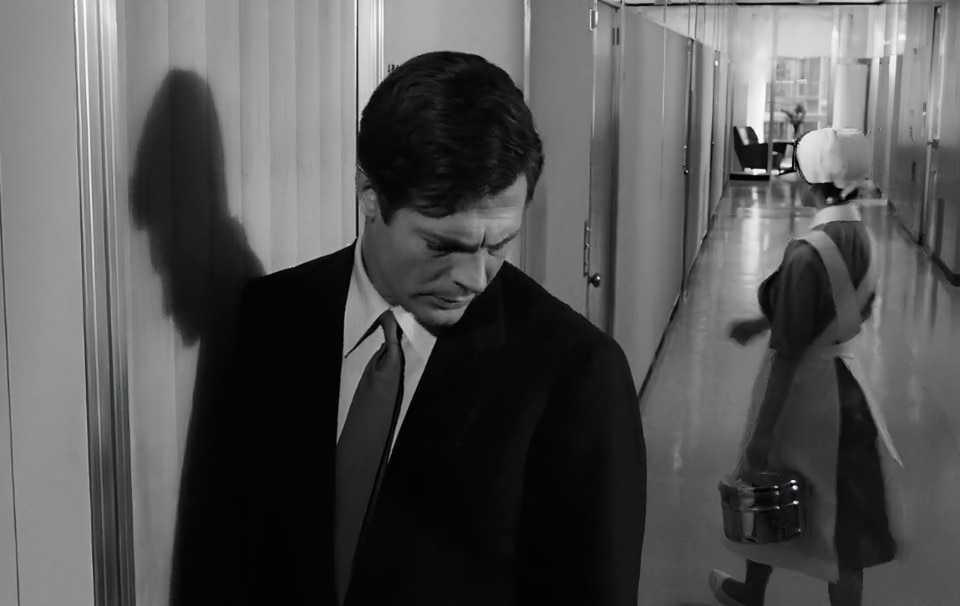In that “trilogy of incommunicability” with which Michelangelo Antonioni would forever transform the way of filmmaking by the early 1960s, two great pillars create the irreplaceable structure of so much revolution. One is space, let us even say architecture: from the baroque metaphysics of Sicily in L'avventura, to L'Eclisse with its freshly-completed Rome in the Eur palazzine (mid-sized residential buildings), the way is through the “rising Milan” of La Notte.
The other, the actors: the unfathomable gazes that in those years would make Monica Vitti a monument to existential suspension, Jeanne Moreau with her apparent apathy, Marcello Mastroianni whose presence, perhaps due to habit, seems to give a dreamlike value to all the spaces where the directors would place him, whether it be the multiple Romes of Fellini’s DolceVitas and OttoeMezzos, Scola’s Una giornata particolare, or Comencini’s Fiat-dominated Turin in La donna della domenica.
La Notte, from 1961, remains the film in which such gift remains most closely linked to architecture. Indeed, it can be said that the first half-hour is a compendium of modern Milanese architecture, starting with the opening credits, which use nothing less than the façade of a soon-opening Pirelli skyscraper as a graphic backdrop, allowing a glimpse of the Central Station, and reflecting the tumultuous void of that Centro Direzionale (central business district), which seemed by then ready to be built, but never would.
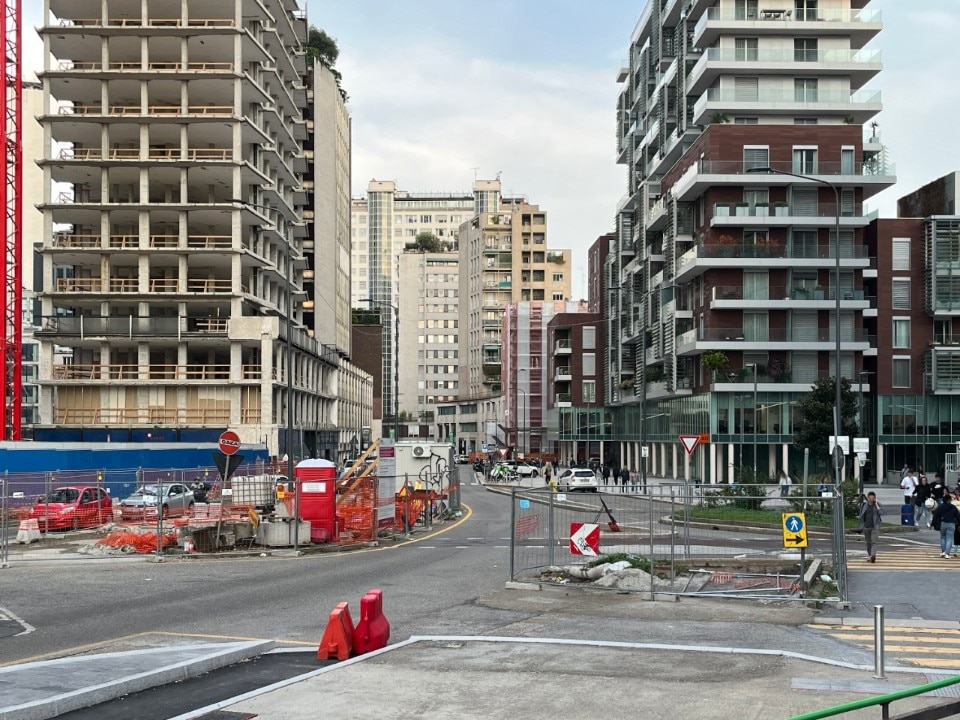
As many directors like to do, and in particular consistency with that expressive code made of apparently inconsequent fragments of thought, charaterizing all his characters, Antonioni draws in the Milan of La Notte an itinerary that has almost no continuity in the city map, only to acquire one in the filmed sequences, naturally launching researchers and communities of enthusiasts on a location-spotting hunt over the years.
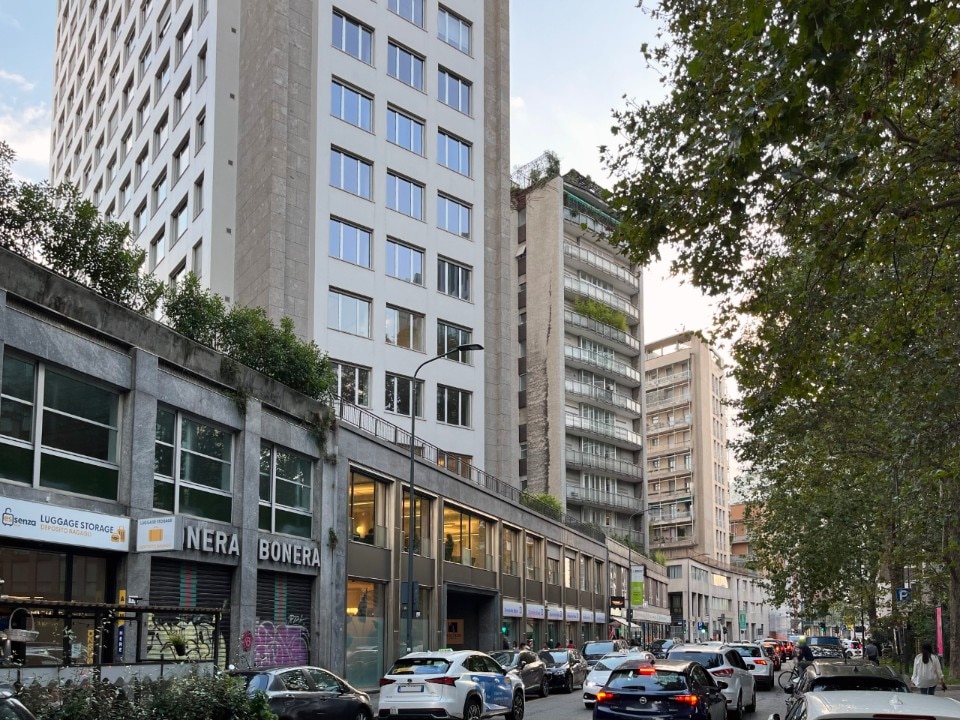
The start of the story-non-story, of the wanderings full of unexplained spleen of writer Giovanni Pontani (Mastroianni) and his wife Lidia (Moreau) is really all condensed around Centro Direzionale, that district between the two stations, Garibaldi and Centrale, which according to the 1953 master plan should have been the centre of gravity of the whole city and the hinterland, bringing large office buildings and large infrastructures, road and otherwise: the latter two would not lack, as represented by via Gioia and the metro line 2, while everything that should have surrounded and animated them would instead struggle to appear, leaving only the large gutting of the former Varesine, the Isola district literally isolated, and so on. Until the 2000s, the Porta Nuova project, Bosco Verticale and the new towers around Piazza Gae Aulenti.
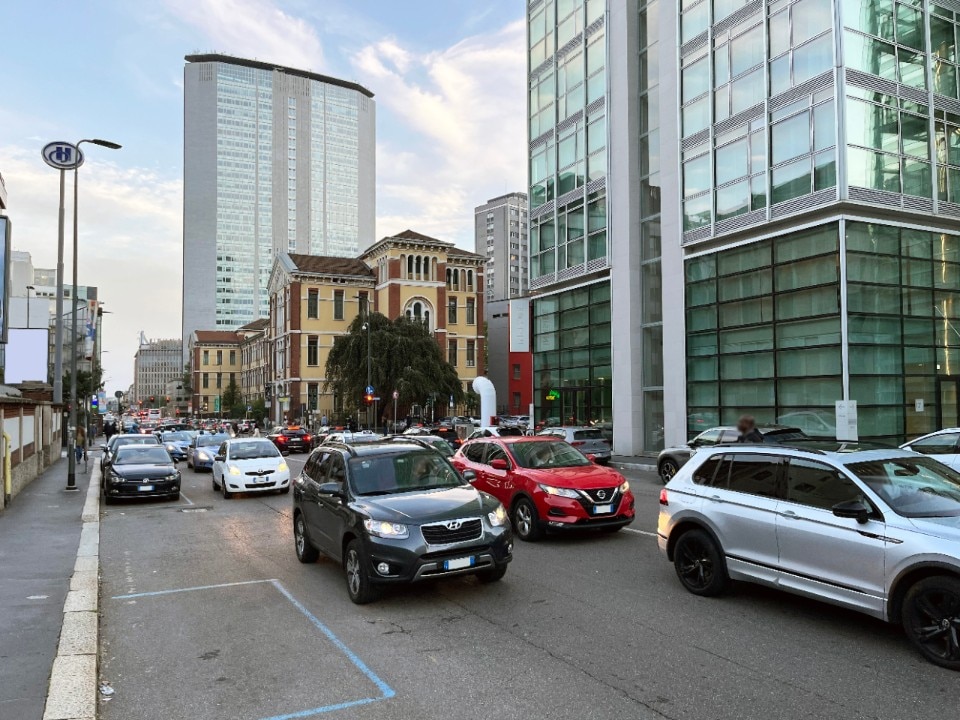
This is where the first actions are concentrated. Giovanni and Lidia visit their sick friend in a clinic that has the exteriors and lobby of Condominio XXI Aprile – a 1953 work by Asnago and Vender, in Via Lanzone, behind Sant'Ambrogio and Cattolica university – but has the interiors of the Torre Galfa, by then recently completed by a former Domus director, Melchiorre Bega, and then destined for a complex history of emptying, reuse and modern hotel remakes.
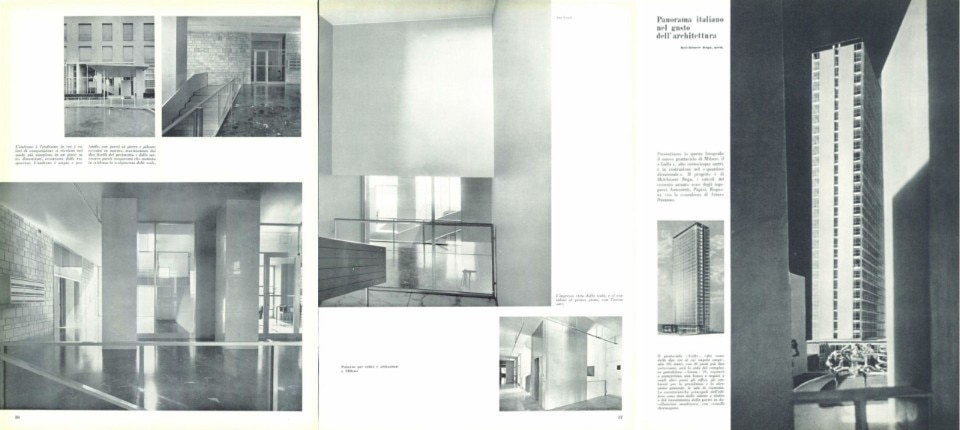
The dialogue with the Pirelli tower, ceaselessly anchoring the scene in the business centre, is constant, even when Giovanni returns home, to those tall buildings with a modern feel set above a plate right on Via Pirelli, among the first ones built for the Centre’s launch. The interior is dense with corridors and walls filled with books, the lamps are jarringly old, Mastroianni reclines on a woven leather daybed; outside the window the emptiness, and a few buildings of the same height. Those same windows today would look out on the Gioia 22 tower that Cesar Pelli’s studio completed in 2021, or Pei Cobb Freed & Partners’ Regione Lombardia new building.
The house may indeed have an iconic role, still Giovanni and Lidia have no rest: “We spend our time in the car, getting around. It's not so happy”. Cars, engines everywhere, the protagonists’ Alfa Romeo Giulietta, taxis, a helicopter.
That is the point where a traffic jam on the way to a book launch gets our characters stuck in the middle of Corso Europa, beneath the aluminium uprights of that apocryphal curtain wall that Vico Magistretti had just created, in 1957, to speak what seems to be a universal language of post-war Milan. The presentation portrays that very same Milan, publisher Bompiani appears, asking his writer for an autograph for Nobel winner Salvatore Quasimodo, Umberto Eco passes by. Moreau can take it no more, impatiently she leaves the event and walks on. She crosses quite a familiar fountain for a few moments, with an even more familiar building behind: it is Gio Ponti’s Secondo palazzo Montecatini, in Largo Donegani, fresh from a post-bombing renovation that would give its designer much to think about.
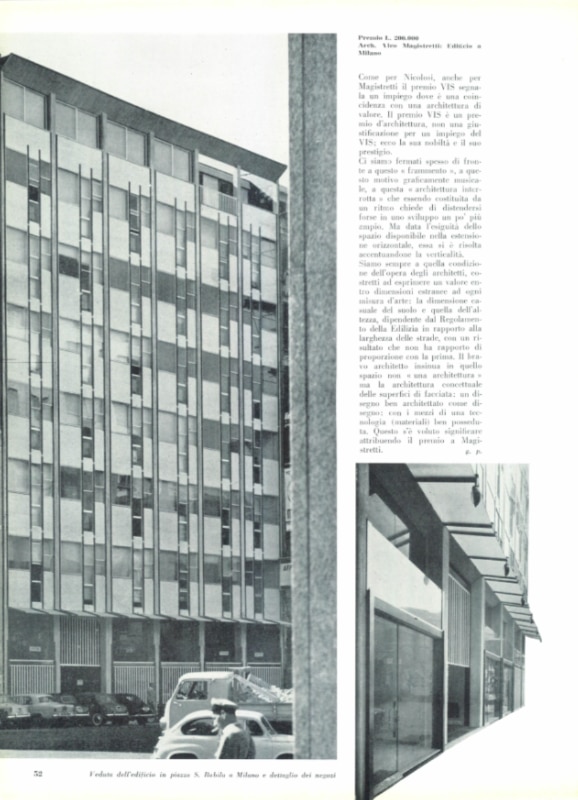
She keeps walking, and she gets in Via Conservatorio, not exactly around the corner: another house that would make the street famous, also by Magistretti, is not there yet; still, at the endpoint of the perspective a monolith, completely abstract compared to the decorated surfaces of the historic city, announces the casa-albergo (house-hotel) that Luigi Moretti had set on via Corridoni just after the war. Its flat surfaces and the cantilevered concrete shields apparently protecting it on the street front will still provide the landscape for a few silent close-ups, and then new sound shots will force as many breaks in the sequence. Cars, the sound of a jet – echoing the passage of the helicopter close to Galfa – a siren and, shortly afterwards, rockets.
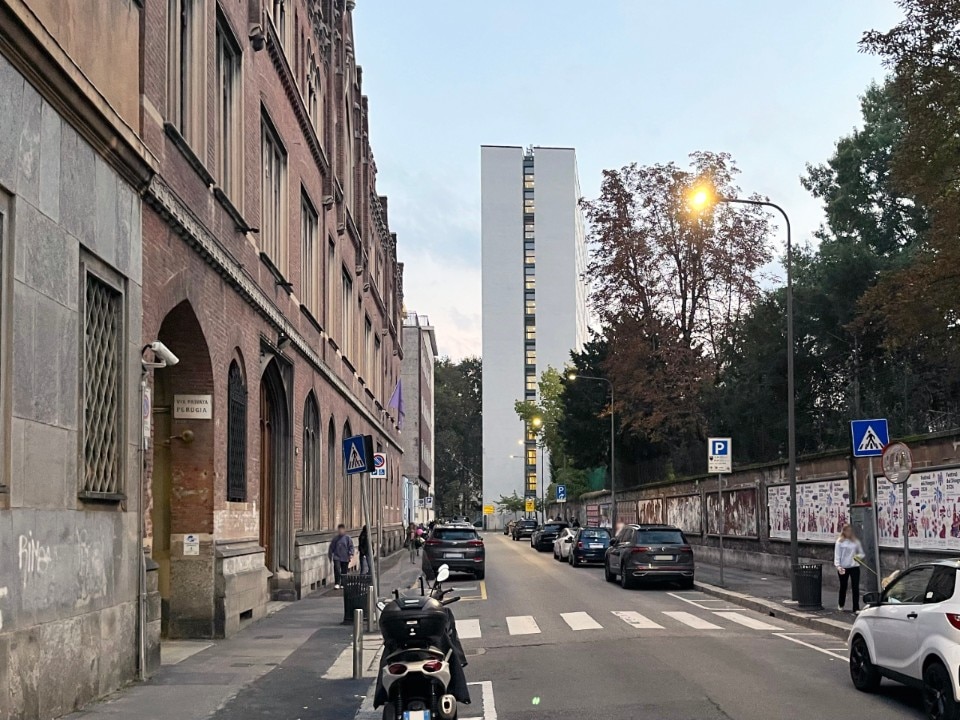
These are the rockets that some kids are launching from a meadow as Lidia-Moreau has now arrived in the remotest organs of the rising city, far at its edges: the suburbs along viale Fulvio Testi, the Parco Nord, towards Sesto San Giovanni, among scattered new buildings, factories, farmsteads and historic villas, behind those areas that by the twilight of industrial era would become Gregotti’s Bicocca, and the Hangar Bicocca that Pirelli opened to art in 2004.
Architecture takes shape as the pivot of a bourgeois drama, and it is in the bourgeois apotheosis that the Night of the title is fulfilled, in the lazy party of local tycoon Gherardini, in his villa, his new villa, built a few years earlier by Luigi Vietti – it is actually the Country Club in Barlassina – where vernacular woods lean against concrete modernisms, stone claddings, large glass windows and swimming pools. Where social rituals will give that architecture one has been left to see abstractly across two hours of movie time, a sudden surge of economic boom vitalism; and where dimly lit rooms will be the backdrop for the mindgames of a suddenly-apearing Vitti. We will see her again as the cinematic soul of other architectures, of the dome that Dante Bini designed for her and Antonioni in Sardinia, but above all of the spaces of other films, other directors and other worlds. But that will be another journey.

Accademia Tadini on Lake Iseo reborn with Isotec
Brianza Plastica's Isotec thermal insulation system played a key role in the restoration of Palazzo Tadini, a masterpiece of Lombard neoclassical architecture and a landmark of the art world.

